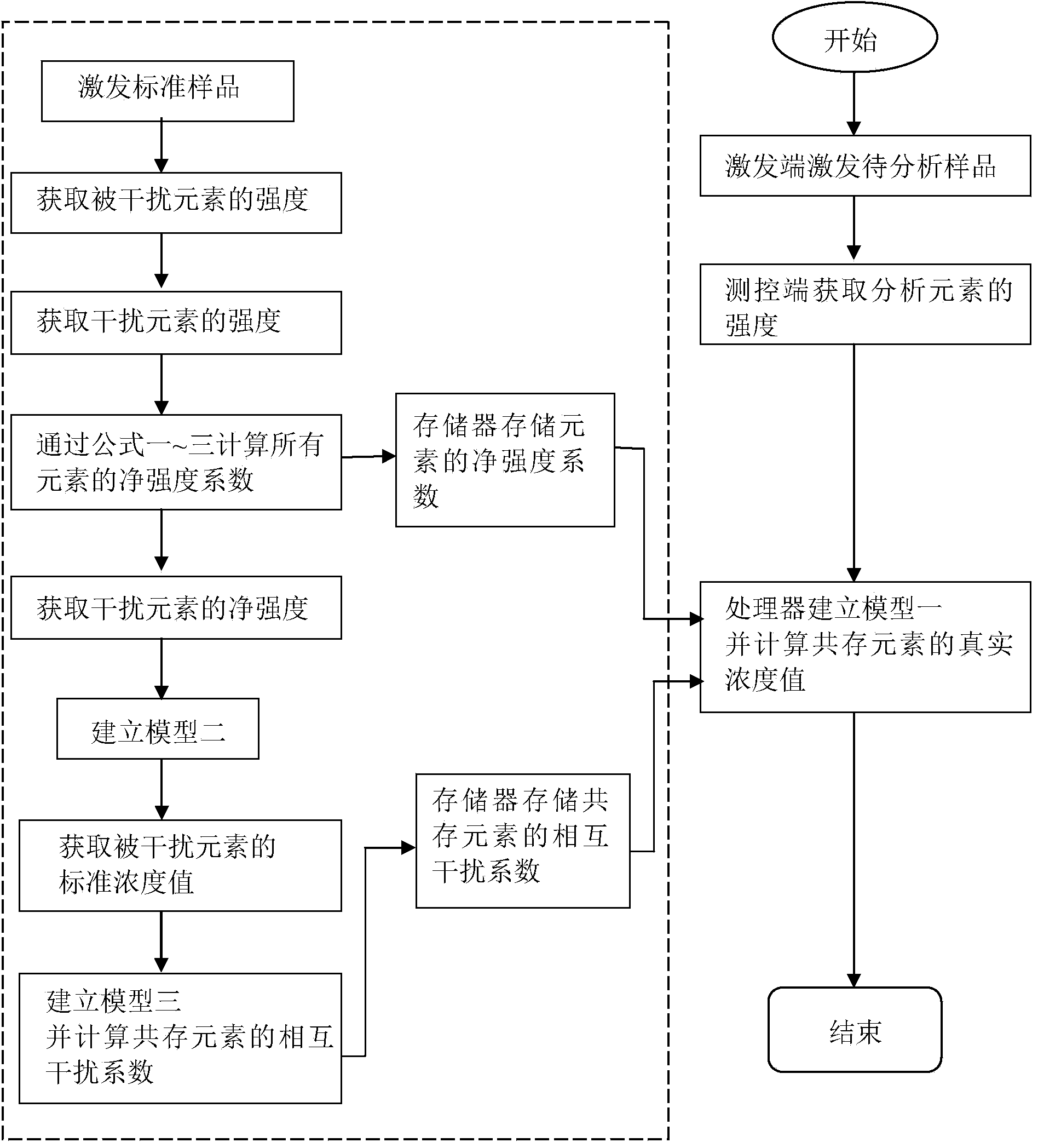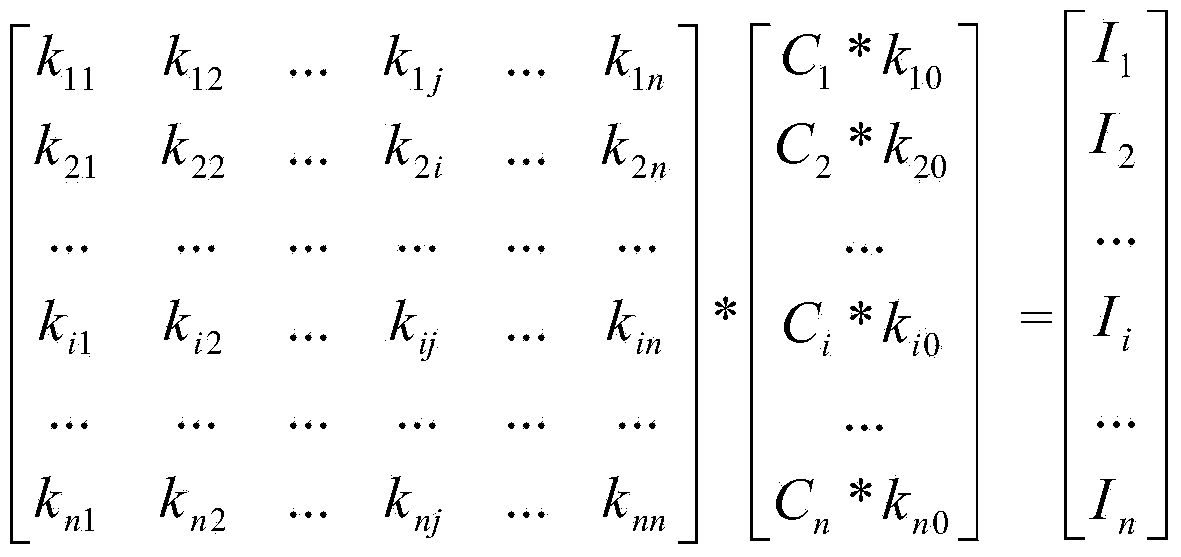Coexistent element intensity based method for analyzing concentrations of mutual interference elements in sample
A technology of coexisting elements and element concentrations, applied in the field of spectral analysis, can solve the problems of mutual interference between spectral lines of elements that cannot be analyzed, errors, and problems such as mutual interference of coexisting elements that cannot be solved
- Summary
- Abstract
- Description
- Claims
- Application Information
AI Technical Summary
Problems solved by technology
Method used
Image
Examples
Embodiment 1
[0091] This example is the analysis result of low-alloy steel analyzed on the BAIRD DV6 spectrometer in the United States. The data processor is a DELL-OPTIPLEX 330 computer, the excitation light source is HR400, and the measurement and control system is MC20.
[0092] 1. Calculate the net strength coefficient k 0
[0093] The standard samples of this example are: GBW01211, GBW01212, GBW01213, GBW01214, GBW01215 and GBW01216. Calculate the net strength coefficient k according to formula 3 0 See Table 1:
[0094] the element
[0095] Table 1: Correspondence table of elements and net strength coefficients
[0096] 2. Calculate the mutual interference coefficient
[0097] Through the standard sample, calculate the mutual interference coefficient, see Table 2:
[0098] the element
[0099] Table 2: Table of Interference Coefficients of Elements
[0100] 3. Actual calculation
[0101] According to the coefficients in Table 1 and Table 2 above, analyze the...
PUM
 Login to View More
Login to View More Abstract
Description
Claims
Application Information
 Login to View More
Login to View More - R&D
- Intellectual Property
- Life Sciences
- Materials
- Tech Scout
- Unparalleled Data Quality
- Higher Quality Content
- 60% Fewer Hallucinations
Browse by: Latest US Patents, China's latest patents, Technical Efficacy Thesaurus, Application Domain, Technology Topic, Popular Technical Reports.
© 2025 PatSnap. All rights reserved.Legal|Privacy policy|Modern Slavery Act Transparency Statement|Sitemap|About US| Contact US: help@patsnap.com



